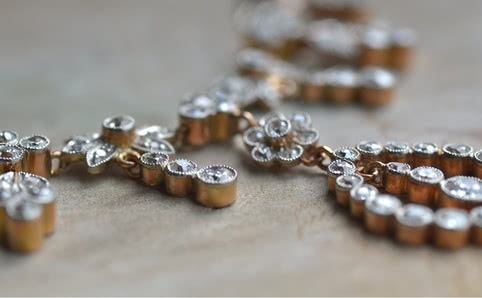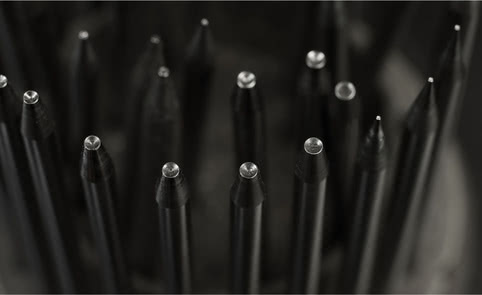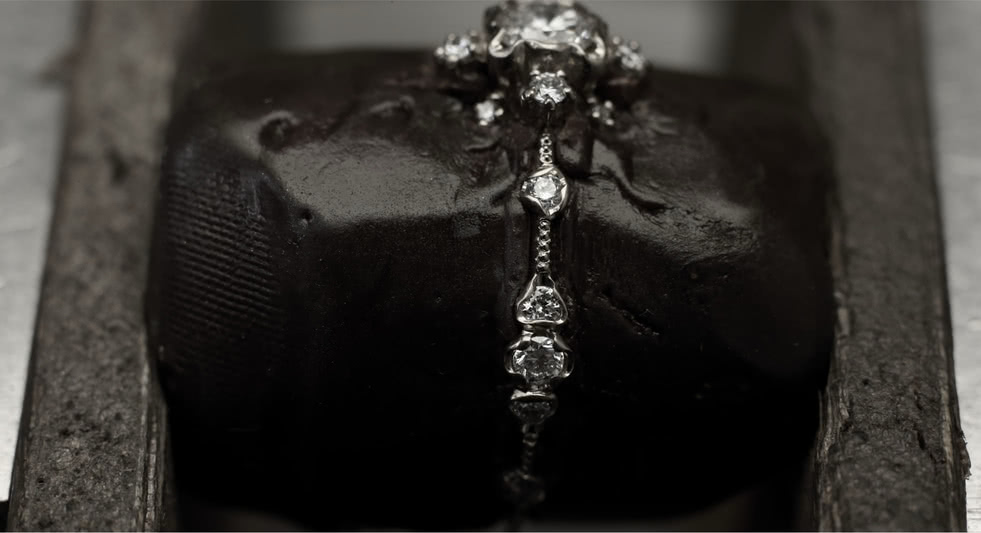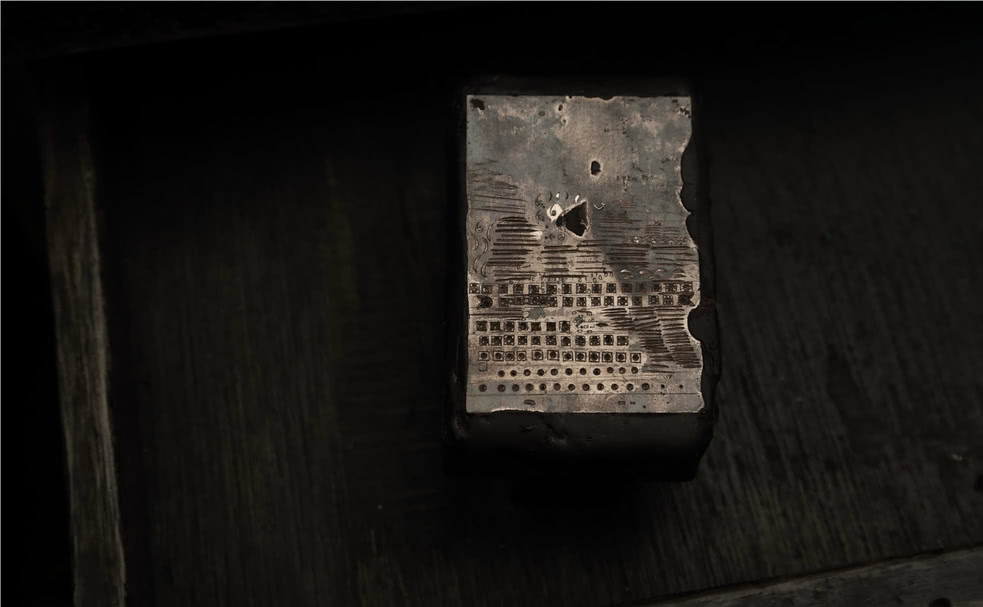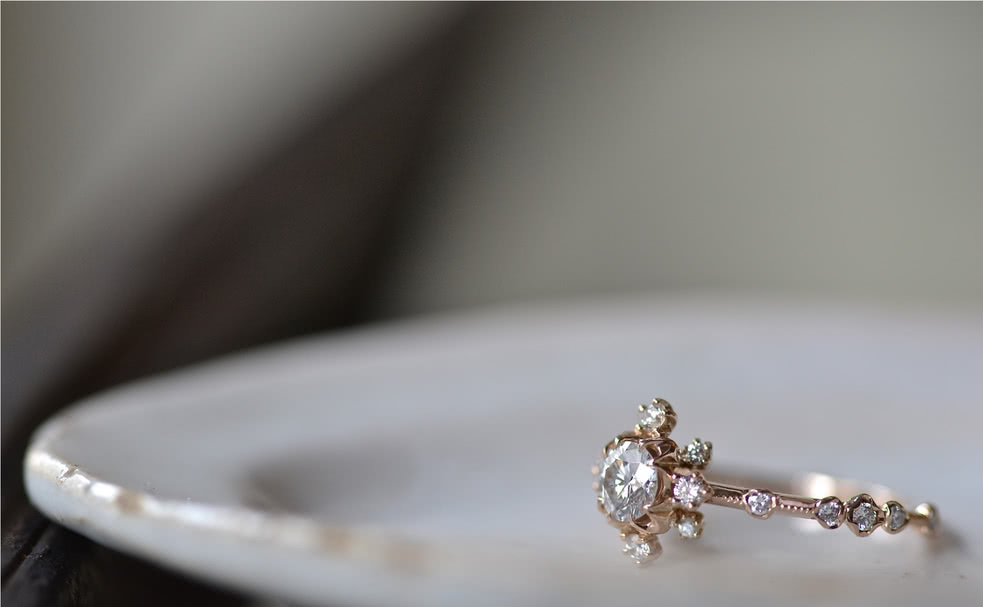Milgrain is not merely a technique; it is a testament to the art of precision, where rows of delicate beads transform gold into an exquisite interplay of light and texture. At kataoka, this timeless craft is honored and reimagined, blending European tradition with the subtle precision of Japanese artisanship. Every bead, no more than 0.2 mm in diameter, is hand-engraved, elevating each piece into a harmonious expression of elegance and grace.
Every milgrain detail whispers the legacy of artistry, connecting the present to centuries of tradition. Each curve, each bead, reflects the quiet dedication of the maker, turning jewelry into a celebration of the enduring bond between hand and material.
The History of Milgrain
Milgrain carries the soul of European heritage, where it once adorned treasures reserved for royalty. A hallmark of refinement, its intricate patterns graced tiaras, rings, and pendants, speaking of a world where elegance was expressed through the finest details. Over centuries, milgrain became more than a symbol of privilege—it evolved into an art form that resonates with timeless sophistication.
kataoka honors this heritage by intertwining the meticulous artistry of milgrain with a modern sensibility. The result is a collection that bridges past and present, crafting jewelry that transcends time, making history wearable in every detail.
From Heritage to Modernity
For centuries, jewelry was an exclusive luxury, its creation a testament to wealth and status. The Industrial Revolution brought a shift, democratizing beauty while preserving artistry. Milgrain, originally a defining feature of platinum jewelry, softened its brilliance with rows of fine beading, blending opulence with subtlety.
Today, kataoka imbues this age-old technique with a contemporary perspective. The milgrain edge is not just an embellishment; it is a quiet narrative, where history and innovation coalesce. Each piece reflects this balance, timeless in its essence, yet designed for the present.
A Study in Perfection
Milgrain demands an extraordinary level of precision and artistry. Each bead, individually engraved, is positioned to create an even rhythm, a dance of light and texture that speaks to the mastery of the artisan’s hand. Using tools honed over generations, Yoshinobu Kataoka achieves a balance that is both meticulous and intuitive.
This meticulous process transforms jewelry into a canvas of refinement. Only a select few possess the skill to execute milgrain at such a level, making every piece a rare expression of human creativity. The result is an intricate pattern that captures light, a visual symphony of texture and brilliance.
kataoka Milgrain
kataoka’s approach to milgrain goes beyond aesthetics—it is a philosophy of enduring beauty. By uniting the Japanese appreciation for imperfection with the precision of Western technique, each creation becomes an intimate reflection of artistry. These are not merely adornments; they are treasures, designed to grow richer with time.
kataoka’s milgrain pieces are crafted to ensure exclusivity. Every bead, every line, tells a story—a tribute to the hand that shaped it and the soul that will wear it. Designed to capture moments, these heirlooms invite you to celebrate the beauty of detail, the poetry of light, and the timeless nature of true craftsmanship.
The Essence of Milgrain
Milgrain is a celebration of the artisan’s devotion, where each bead is a mark of patience, precision, and purpose. At kataoka, this legacy is carried forward, blending artistry with emotion. Each creation is an enduring reflection of elegance, inviting you to experience the harmony of craft and design.
Discover kataoka’s milgrain collection—a quiet symphony of refinement and grace, created to resonate across generations.



















